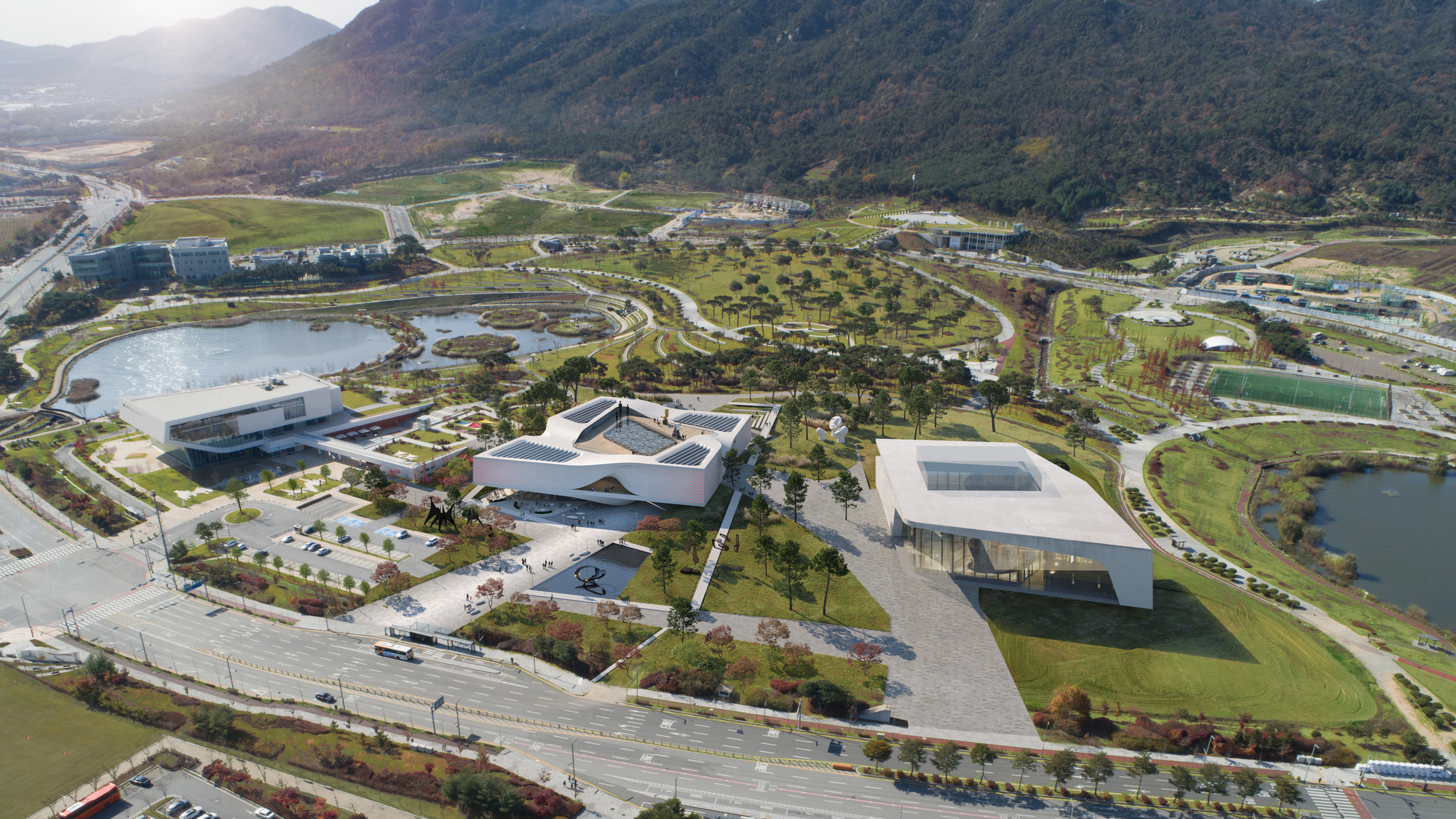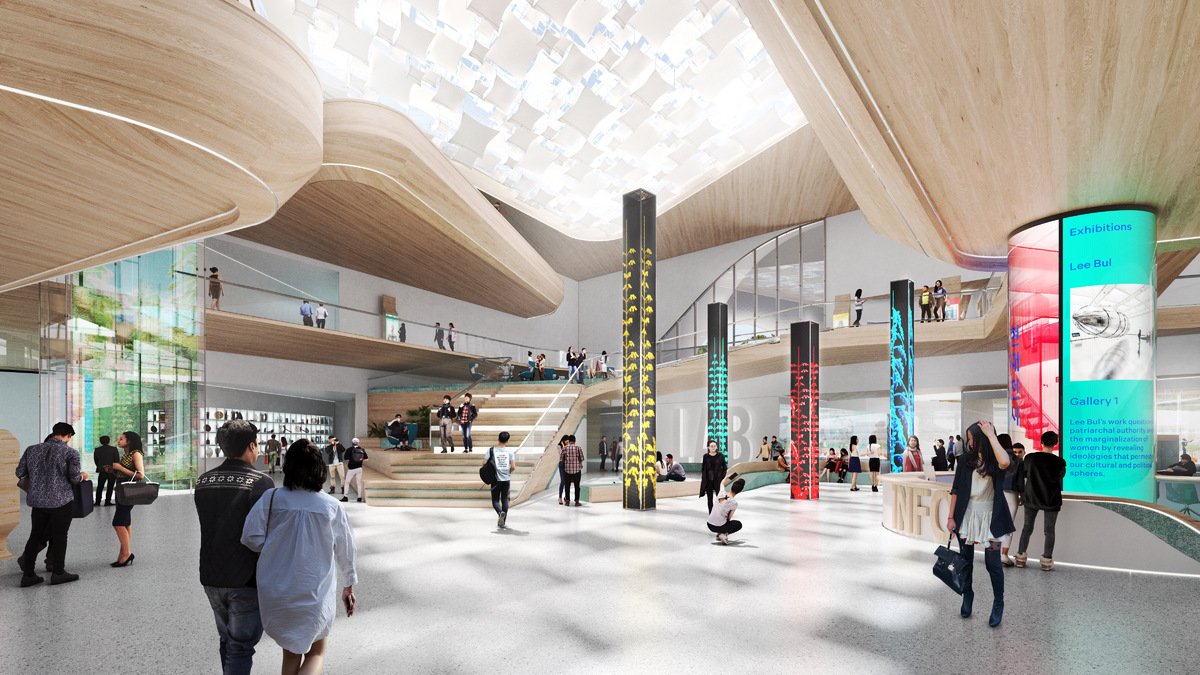UNStudio and DA Group’s design for the Chungnam Art Museum goes far beyond a traditional art museum. It is a fully immersive cultural and social experience for the whole community; a living, breathing space that will grow and change over time. The museum is designed as a place of inspiration, participation and contribution to both art and the community. It also aims to become one of the first Zero-Energy museums in Korea.
The 13,797m2 Museum will provide a new form of interactive engagement between art and the public. It does this by turning the museum inside out, bringing in the city and community of Chungnam to create a diverse and vibrant cultural experience. For the future of the museum, we see the opportunity to create vibrant and interactive spaces through which art and technology can be experienced in new ways.

The Chungnam Art Museum will be a marketplace for culture that embraces flexibility and the concept of art for all. It will ultimately be a place for the community, now and for the future.

The design for this smart art museum looks at new ways in which visitors can experience and share stories about art and design both physically and digitally, and the architecture has to support this experience.
For this reason architects UNStudio have incorporated two big, defining details into the design: a plateaued central courtyard and the Cultural Boulevard. These two big details are crucial for creating communication spaces, as well as to the wayfinding, as they enable people to be guided on a continuous experience of space and art from multiple routes and angles.

The Cultural Boulevard is the central wayfinding element, as it combines the outside with the inside and provides links throughout the site, seamlessly blending art, culture and commerce.
From outside, the Cultural Boulevard connects the cultural plots with one another, and weaves the main access routes through the building and into the central courtyard. From here, plateaus also reach into the courtyard, offering multiple perceptions of the space.

The continuity of the Cultural Boulevard to the Arts Centre and the Library also activates the common functions. This is then balanced through the connection to the landscape and to the mountains behind.

